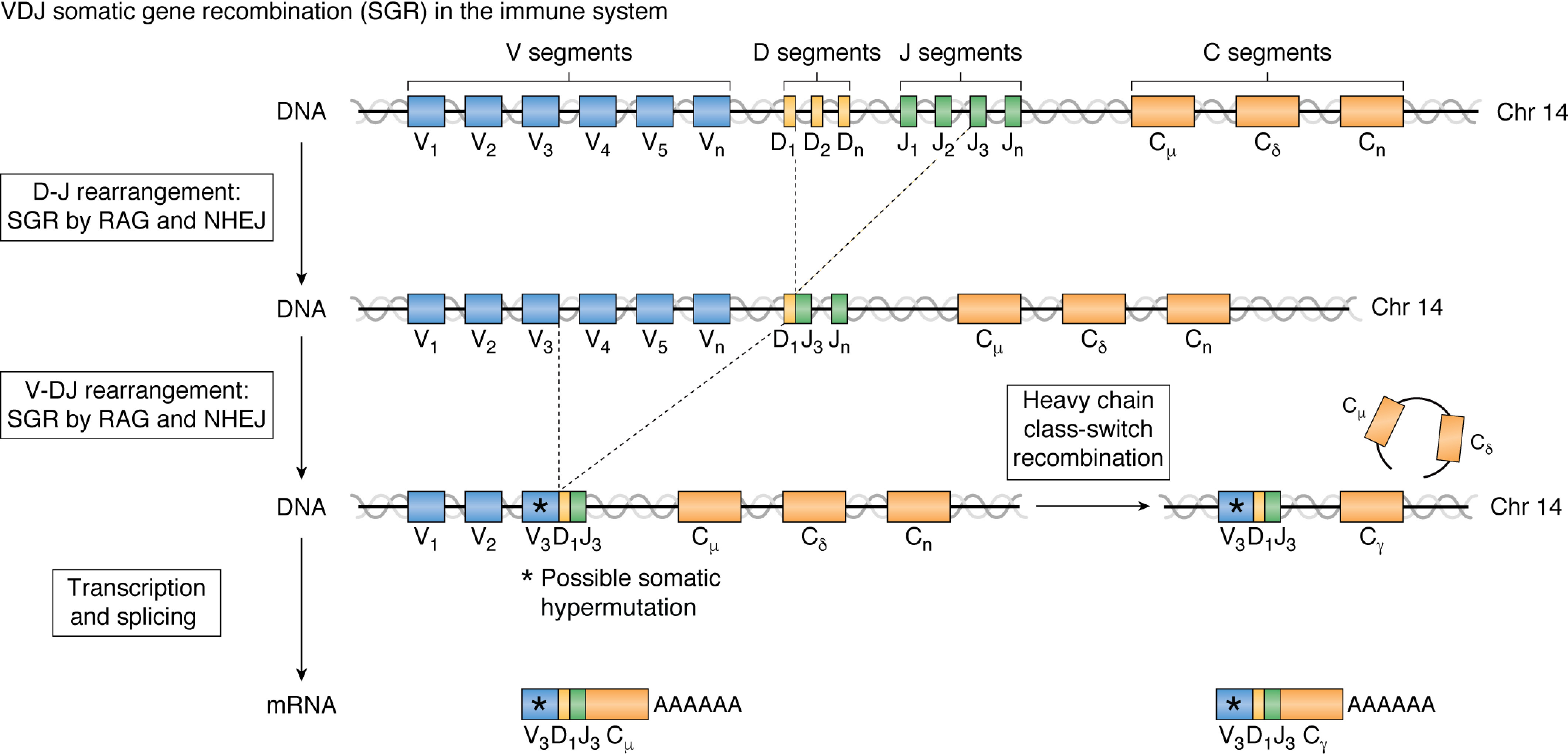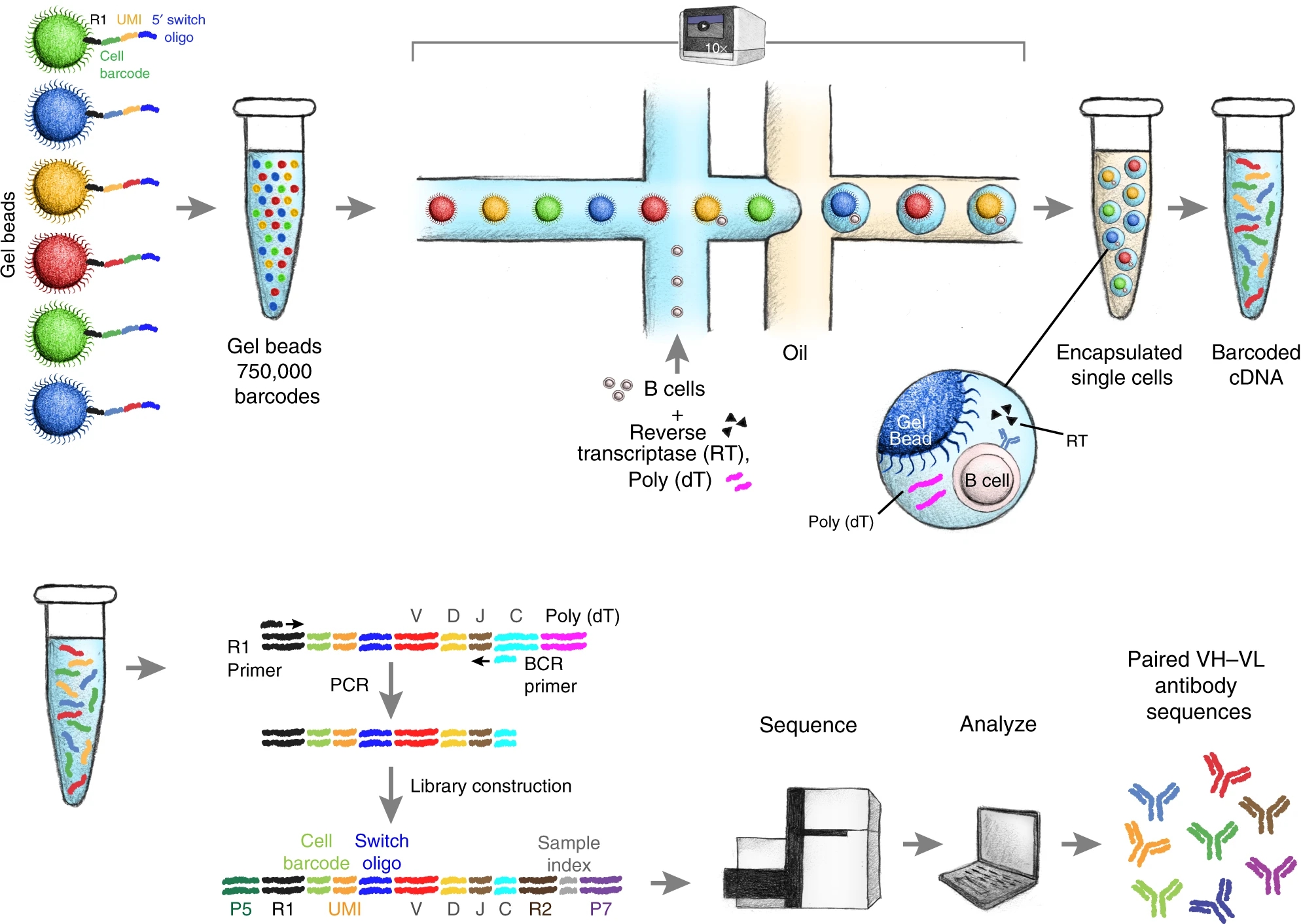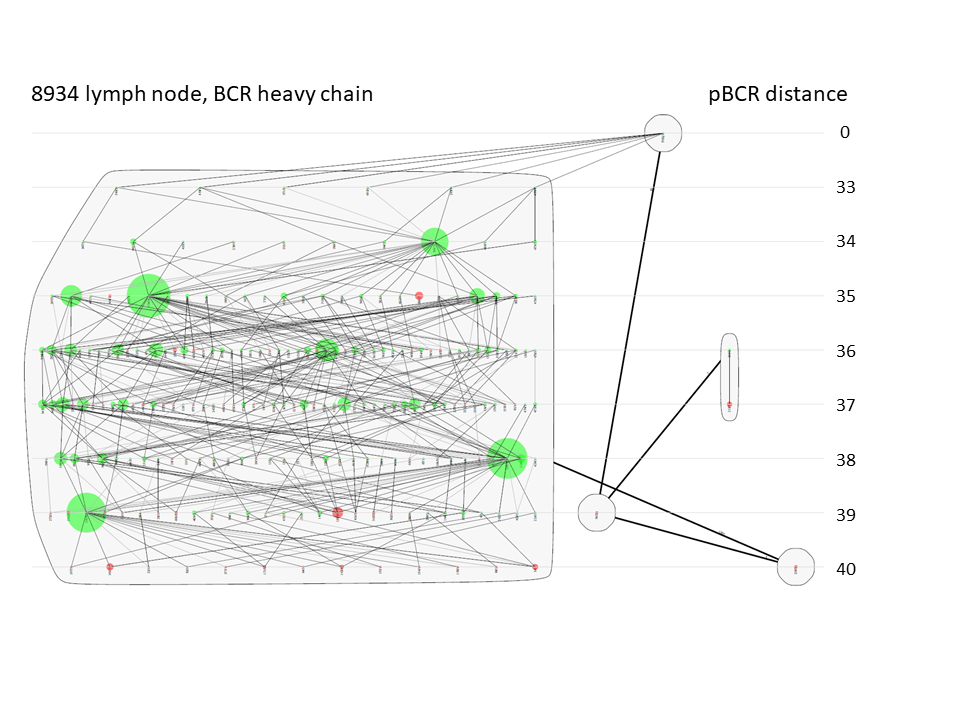10x VDJ Sequencing Service
- Assemble and annotate full-length BCR V(D)J gene sequences.
- Obtain paired heavy and light chain immunoglobulin (Ig) sequences from single B cells, with isotype-resolved receptor analysis.
- Assemble and annotate full-length TCR V(D)J gene sequences.
- Obtain paired α-chain and β-chain TCR sequence information for individual T cells.
- Cancer Immunotherapy: Monitor immune clonal expansion and dynamics to assess the efficacy and durability of immunotherapies.
- Vaccine Development: Evaluate post-vaccination immune responses and antigen-specific reactions, supporting vaccine immunogenicity research.
- Autoimmune Disease Research: Investigate abnormal immune clonal expansions to uncover disease mechanisms and support early diagnosis and personalized treatments.
- Infection Immunology: Analyze immune responses to pathogens and reveal the mechanisms underlying pathogen-specific immune responses.
- If focusing solely on T/B cells, sorting is recommended to exclude unrelated cell types.
- If studying interactions between T/B cells and other cell types, sorting is unnecessary.
VDJ sequencing is a powerful technique for studying the immune system, particularly in analyzing the rearrangement of T cell receptor (TCR) and B cell receptor (BCR) genes. The diversity of immune responses originates primarily from VDJ rearrangement, where the V gene (Variable region), D gene (Diversity region), and J gene (Joining region) collectively form the VDJ region. The immune receptor's functional properties, however, are defined by the C gene (Constant region). Sequencing the VDJ region enables researchers to uncover the diversity of immune receptors and delve deeper into the molecular mechanisms underlying immune responses. This technology is invaluable for research in immunology, cancer immunotherapy, vaccine development, and immune escape mechanisms.

Kaeser, G. et al. J Biol Chem. 2020.
Figure 1. VDJ Recombination in the Immune System
Traditional VDJ sequencing methods often rely on short-read sequencing following PCR amplification, which limits their ability to analyze immune receptor diversity and variability with high throughput and precision. In contrast, 10X VDJ sequencing powered by the 10x Genomics platform provides long-read, high-coverage immune receptor data. This cutting-edge technology enables single-cell-level analysis of immune cells, accurately capturing complete VDJ rearrangement information and overcoming the limitations of traditional methods for analyzing complex immune repertoires.
MtoZ Biolabs’ 10X VDJ Sequencing Service integrates this advanced platform to support comprehensive studies of immune system diversity and immune receptor functionality, offering robust solutions for immunology, cancer immunotherapy, and related research fields.
Services at MtoZ Biolabs
MtoZ Biolabs offers a comprehensive 10X VDJ Sequencing Service powered by the latest 10x Genomics technology, ensuring high-quality and precise immune receptor data. Leveraging the 10x Genomics Chromium platform, we utilize microfluidics to independently capture and sequence single immune cells, enabling large-scale immune repertoire analysis. Key Offerings Include:
1. Single-Cell BCR Sequencing
2. Single-Cell TCR Sequencing
3. Single-Cell 5' Transcriptome Sequencing
Simultaneously measure TCR/BCR sequences and the 5' transcriptome to define cell populations and analyze gene expression.
Analysis Workflow
The 10x VDJ Sequencing Service ensures a precise and efficient workflow for immune receptor profiling, leveraging advanced microfluidics and high-throughput sequencing to deliver high-quality data.
1. Sample Preparation: Isolate single cells from client-provided samples, such as peripheral blood, PBMCs, or tissue samples.
2. Single-Cell Partitioning and Amplification: Partition individual cells using 10x Genomics microfluidics technology and amplify immune receptor genes in isolated reaction chambers.
3. Sequencing and Data Collection: Perform high-throughput sequencing to capture immune receptor data with exceptional quality and accuracy.
4. Data Analysis and Reporting: Analyze data under rigorous quality control protocols and deliver comprehensive immune receptor analysis reports.

Goldstein, L. D. et al.Commun. Biol. 2019.
Figure 2. The Workflow of 10x VDJ Sequencing
Service Advantages
· High Throughput and Precision
Capture vast numbers of immune receptor sequences in a single experiment with superior accuracy using the 10x Chromium platform.
· Single-Cell Resolution
Precisely analyze TCR/BCR sequences at the single-cell level, unveiling individual immune responses and system dynamics.
· Comprehensive Receptor Mapping
Decode both heavy and light chains of TCR/BCR to generate a complete immune receptor map, facilitating a deeper understanding of immune cell function and antigen recognition.
· Clonal Expansion Analysis
Accurately identify immune clonal expansion, enabling the evaluation of immunotherapy outcomes and insights into immune response dynamics.
· Tailored Data Analysis
Provide customized solutions to fit specific research objectives, including immune repertoire diversity, clonal frequencies, and antigen specificity analysis.
Applications
Case Study
Case 1: Application of 10x VDJ Sequencing in Follicular Lymphoma Research
This study employed 10x VDJ sequencing technology to analyze the immune subclonal evolution in follicular lymphoma (FL). High-throughput sequencing of B-cell receptor (BCR) V(D)J gene rearrangements revealed immune characteristics and transcriptional differences among subclones in FL. This method successfully identified key immune features linked to FL immune evolution, demonstrating the value of 10x VDJ Sequencing Service in cancer immunology research.

van Bergen, C. A. M. et al. Blood. 2019.
FAQ
Q1: Why is 5' capture commonly used in 10x VDJ sequencing?
5' capture enables the enrichment of VDJ regions located at the 5' end of the transcript, ensuring optimal sequencing efficiency. Gel beads with Template Switching Oligos (TSOs) and poly(G) sequences facilitate the selective capture of VDJ regions, which are critical for immune receptor diversity analysis.
Q2: Do T/B cells need to be sorted for 10x VDJ sequencing?
Note: If T/B cells constitute less than 20% of the sample, data yield may be insufficient, potentially impacting analysis.
MtoZ Biolabs is committed to delivering state-of-the-art immune receptor sequencing solutions. Whether for basic research, immunotherapy development, or vaccine studies, our 10X VDJ Sequencing Service provides high-quality data and precise analysis to support groundbreaking research. Contact us today to learn more and discuss your specific needs.
How to order?







